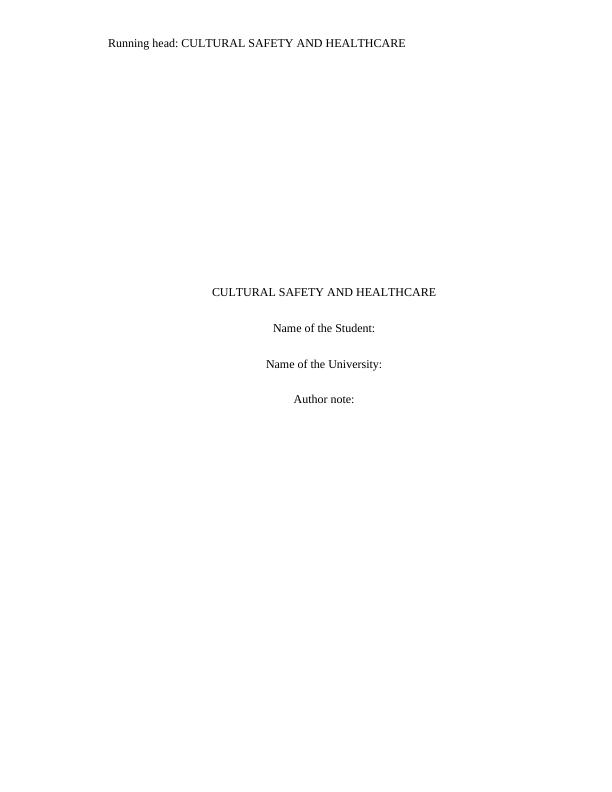Cultural Safety and Healthcare for Aboriginal and Torres Strait Islander Communities in Australia
4 Pages585 Words96 Views
Added on 2022-11-11
About This Document
This paper discusses the importance of Aboriginal Community Controlled Health Service (ACCHS) and ATSIHWs for the healthcare deliverance of Matt, a 24 year old Aboriginal patient. It also highlights the need for cultural competence and cultural sensitivity to address the unique cultural healthcare needs of Indigenous communities in Australia.
Cultural Safety and Healthcare for Aboriginal and Torres Strait Islander Communities in Australia
Added on 2022-11-11
ShareRelated Documents
End of preview
Want to access all the pages? Upload your documents or become a member.
Delivering Culturally Safe Care of the Diabetic Patient in an Indigenous Australian Community
|4
|726
|451
Cultural Safety in Healthcare
|11
|3280
|87
Aboriginal Community Controlled Health Services: Providing Culturally Safe Primary Healthcare
|8
|2277
|265
Question 2: Primary health services and care interventions
|1
|497
|83
Addressing Health Inequalities PDF
|11
|2365
|145
Cultural Safety in Healthcare
|8
|2356
|201


